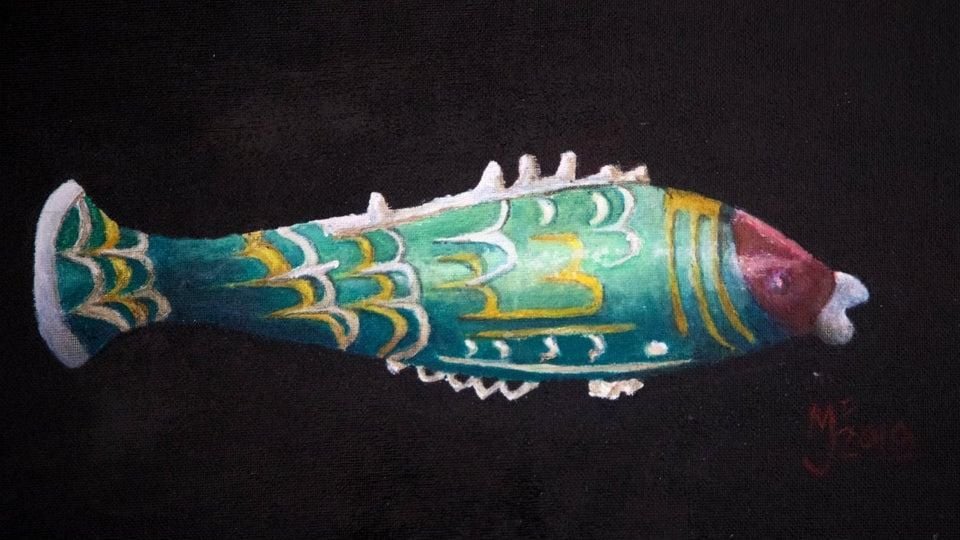It Took Two Years for Global Experts to ID This Little Shard of Roman Glass
The rare blue-green glass was unearthed at the Chedworth Roman Villa in the U.K.
/https://tf-cmsv2-smithsonianmag-media.s3.amazonaws.com/filer/55/20/5520ea11-2655-4096-b6cb-7f1dccaf21ea/fragment.jpg)
In 2017, a master’s student dug up a small piece of blue-green glass with a fish scale pattern on it during excavations at the Chedworth Roman Villa in Gloucestershire, one of the grandest Roman-era structures in the U.K. It took two years of sleuthing, however, for experts from around the world to identify where the rare piece of glass came from. The answer reveals just how connected the ancient empire was.
After Peter Moore of University of York came across the unusual shard of glass, he and his colleagues knew he had uncovered something special, Mark Brown at The Guardian reports. They sent it on to Roman glass expert Jennifer Price, who, in turn, also sought help from other global experts to figure out where it came from. As it turned out, the glass was a match for a fish-shaped bottle held in the Corning Museum of Glass in New York.
Price, who died in May, concluded in the newsletter for the Association for the History of Glass that the Chedworth fragment came from close to the fish’s tail. It’s likely the fish once held an exotic perfume, which was poured out of its open mouth.
No similar object has been found in Roman ruins in the U.K. “When it appeared, the first wipe of the surface showed the color and it quickly became apparent it was something special,” Moore says in a press release. “Excavating anything at Chedworth and knowing that you are the first person to gaze upon it for at least 1,800 years is a feeling that never tires, the memory of recovering this piece of glass certainly will not.”
The only other example of the fish patterns comes from a burial dated to 2 A.D. at Chersonesus in the Crimean Peninsula, which had been conquered by Roman general Pompey Magnus in the 1st century B.C. That delicate bottle was found in many pieces and restored. Just like the Crimea find, the identification of the shard at the villa shows just how interconnected the empire was, in addition to demonstrating the wealth of the family that inhabited the Chedworth villa.

“Other objects found at the villa show it was home to somebody of wealth and status,” Nancy Grace, a National Trust archaeologist who led the dig at the villa, says in the release. “That such an exotic thing was brought from so far away underlines that the occupants were in touch with the furthest regions of the Roman Empire and wanted to show off that influence. It is amazing that a small fragment has told us so much.”
Archaeologists know the villa was established as a simple structure with three small buildings in the 2nd century A.D. Over the next two centuries, the modest dwelling grew; by around 360 to 380 A.D. it had expanded into a massive compound with mosaics inlaid on the floor, its own bathhouse and elements that were made of marble.
The owner of the villa may have been an extremely prosperous farmer and landowner or on the local administrative council. It’s even possible the owner wasn’t even Roman, but a local who had adopted Romanized ways. When the Roman Empire departed from Britain around 410 A.D., whoever lived at Chedworth also left, or lost their source of income, and the luxury villa began to fall into disrepair.
Most traces of the villa disappeared until 1864 when a gamekeeper noticed some of the surviving walls. An archaeologist cut down the woods that had grown up through the site and conducted excavations. In 1924, the U.K.’s National Trust acquired the site and excavations have of taken place ever since, including the five-year project that unearthed the rare blue-green glass. Now that it's been identified, you can catch the slippery fish fragment on display at the Chedworth Villa museum throughout the summer.